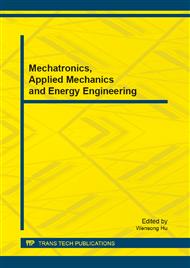p.185
p.195
p.201
p.205
p.211
p.217
p.222
p.228
p.232
Development of Mathematical Model for Chip Serration Frequency in Turning of Stainless Steel with Magnetic Damping from Tool Side
Abstract:
Chatter, the self-excited and violent oscillatory motion between the tool and the work-piece, is detrimental to all machining operations, especially turning. It can lead to poor surface topography, reduced productivity, excessive tool wear, and damaged machine-tool components. Several theories have been introduced to explain chatter, but their predictions have not always been reliable. Therefore, chatter avoidance has relied on inefficient techniques like limiting material removal rates or expensive setups such as actuators and ultrasonic vibration damping systems. However, a deeper investigation into chatter formation reveals that chip morphology and segmentation play a significant role during incidence of machining chatter. The novel Resonance theory of chatter combines the concept of mode coupling of the machining setup and serrated chip formation, to explain the incidence of chatter. To validate the postulates of this theory, models for chip serration frequency are essential. At the same time, a reliable and economical chatter control method is required. To this end, the current research work developed an empirical mathematical model of chip serration frequency in turning of stainless steel AISI 304 using Response Surface Methodology (RSM). Also, it investigated the influence of damping provided by magnetic field from a permanent magnet. The developed chip serration model shows good agreement with experimental data.
Info:
Periodical:
Pages:
211-216
Citation:
Online since:
September 2013
Keywords:
Price:
Сopyright:
© 2013 Trans Tech Publications Ltd. All Rights Reserved
Share:
Citation:


